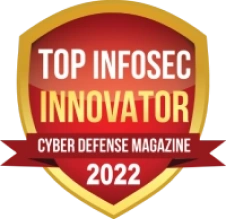What are Advanced Persistent Threats (APT)?
Advanced Persistent Threats (APTs) are highly sophisticated and targeted cyberattacks carried out by well-funded threat actors, often with the backing of nation-states or organized cybercriminal groups. Unlike common cyber threats such as malware or ransomware, APTs are designed for long-term infiltration and data exfiltration, allowing attackers to maintain unauthorized access to a network for extended periods without detection. These attacks typically target high-value organizations, including government agencies, financial institutions, healthcare providers, and large enterprises, where sensitive data, intellectual property, and critical infrastructure can be compromised.
APTs distinguish themselves from other cyber threats through their persistence, stealth, and adaptability. Attackers use advanced techniques such as social engineering, phishing emails, zero-day exploits, and supply chain attacks to gain initial access to a system. Once inside, they establish a foothold, often through remote access tools or backdoors, enabling them to move laterally within the network. They employ encryption, obfuscation, and legitimate system tools to avoid detection by traditional security measures. Unlike one-time cyberattacks that aim to cause immediate damage, APTs focus on long-term espionage, allowing attackers to gather intelligence, steal data, and manipulate systems over weeks, months, or even years.
One of the key characteristics of APTs is their highly targeted nature. Unlike widespread cyber threats that rely on mass distribution, APTs involve extensive reconnaissance before the attack, allowing threat actors to tailor their techniques based on the victim’s infrastructure and security defenses. This makes APTs particularly dangerous, as traditional antivirus software and perimeter security tools often fail to detect their presence. The use of fileless malware, living-off-the-land tactics, and sophisticated evasion methods further complicates detection.
The impact of an APT attack can be devastating. Organizations that fall victim to APTs may suffer financial losses, reputational damage, intellectual property theft, and regulatory penalties. In some cases, APTs can disrupt critical operations or compromise national security, making them a top concern for cybersecurity professionals worldwide. As cyber threats continue to evolve, organizations must adopt a proactive approach to cybersecurity, leveraging advanced threat detection, behavioral analysis, Zero Trust architecture, and continuous monitoring to identify and mitigate APT activity before significant damage occurs. Understanding what APTs are and how they operate is the first step in building a robust defense against these persistent and evolving threats.
Common Targets of APT Attacks
Advanced Persistent Threats (APTs) are not random cyberattacks; they are highly strategic and carefully planned operations targeting organizations and entities that hold valuable data or control critical systems. APT attackers focus on sectors where long-term access can provide financial gain, strategic intelligence, or geopolitical advantages. Unlike traditional cyber threats that aim for immediate financial profit through ransomware or phishing, APTs seek prolonged infiltration to monitor activities, exfiltrate sensitive information, and potentially disrupt operations. Understanding the most common targets of APT attacks helps organizations prioritize cybersecurity defenses and mitigate risks.
One of the primary targets of APT attacks is government agencies and defense organizations. Nation-state attackers often use APTs to infiltrate foreign governments, defense contractors, and intelligence agencies to steal classified information, conduct espionage, or disrupt national security operations. These attacks can compromise military strategies, diplomatic communications, and critical infrastructure, making them a top concern for cybersecurity professionals in the public sector.
Financial institutions, including banks, investment firms, and payment processors, are also prime targets for APT attacks. Cybercriminals and state-sponsored groups target these organizations to gain access to sensitive financial data, manipulate transactions, or steal large sums of money. Given the vast amount of personal and corporate financial information stored in banking systems, APTs pose a severe risk to global financial stability.
The healthcare sector has become an increasingly attractive target for APT groups due to the high value of medical records and patient data. Hospitals, pharmaceutical companies, and research institutions store vast amounts of confidential health information, making them lucrative targets for attackers looking to exploit data for identity theft, insurance fraud, or black-market sales. Additionally, APTs targeting healthcare institutions can disrupt critical services, putting lives at risk.
Technology companies, including software providers, cloud service providers, and telecommunications firms, are also frequent targets. APT attackers seek to exploit proprietary research, intellectual property, and vulnerabilities in widely used technologies. Breaches in these organizations can lead to cascading security threats affecting millions of users and businesses globally.
Other common targets of APT attacks include energy and utility companies, where attackers aim to compromise power grids, water treatment facilities, and oil and gas infrastructure. Disrupting these industries can have severe economic and societal consequences. Similarly, academic institutions and research centers are frequently attacked for access to cutting-edge scientific advancements, particularly in artificial intelligence, biotechnology, and defense research.
ately, APT attacks are a persistent and evolving threat that can impact any organization with valuable data or strategic significance. Companies and institutions must adopt robust cybersecurity measures, continuous monitoring, and Zero Trust principles to detect and mitigate APT activity before severe damage occurs.
The Role of Zero Trust in Defending Against APTs
Zero Trust has emerged as a critical cybersecurity framework for defending against Advanced Persistent Threats (APTs),which are highly sophisticated and stealthy attacks designed to infiltrate networks and persist undetected for extended periods. Unlike traditional security models that assume entities inside the network are trustworthy, Zero Trust operates on the principle of "never trust, always verify." This approach minimizes the attack surface, restricts lateral movement within networks, and enforces strict access controls, making it significantly harder for APTs to succeed.
One of the primary ways Zero Trust helps defend against APTs is through continuous authentication and verification. Instead of granting broad, long-term access to users and devices, Zero Trust requires dynamic authentication based on multiple factors, including user identity, device health, geolocation, and behavioral patterns. By ensuring that only authorized users with verified credentials can access specific resources, Zero Trust significantly reduces the risk of unauthorized access by attackers who may have stolen or compromised login credentials.
Micro-segmentation is another critical element of Zero Trust that limits the impact of APTs. Traditional network security models often allow attackers to move laterally once they gain initial access. With Zero Trust, networks are divided into isolated segments, ensuring that even if an attacker breaches one part of the network, they cannot easily access other critical systems or sensitive data. This containment strategy prevents APTs from expanding their reach and carrying out long-term espionage or data exfiltration.
Least privilege access is a fundamental principle of Zero Trust that further enhances security against APTs. This approach ensures that users, applications, and devices only have access to the resources they need to perform their specific tasks. By strictly limiting access rights and enforcing just-in-time (JIT) access controls, Zero Trust minimizes opportunities for attackers to escalate privileges or exploit excessive permissions within the network.
Zero Trust also enhances threat detection and response by leveraging advanced analytics, artificial intelligence, and machine learning. By continuously monitoring user behavior, device activity, and network traffic, organizations can quickly identify anomalies that may indicate APT activity. Security teams can then take immediate action to investigate, contain, and remediate potential threats before they cause significant damage.
In addition, Zero Trust incorporates endpoint security measures such as continuous device monitoring, application whitelisting, and real-time threat containment. This ensures that even if an endpoint is compromised, the attacker is unable to execute malicious code or establish persistent access to the network.
As APT attacks continue to evolve in sophistication, organizations must move beyond traditional perimeter-based defenses and adopt a Zero Trust architecture to proactively safeguard their critical assets. By implementing Zero Trust principles, organizations can significantly enhance their ability to detect, prevent, and respond to APTs, ultimately reducing the risk of long-term infiltration and data breaches.






